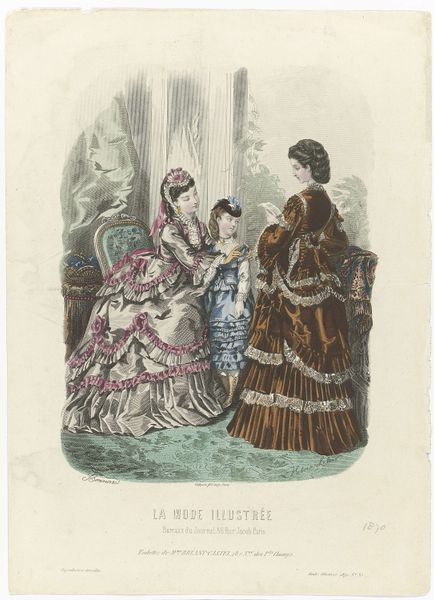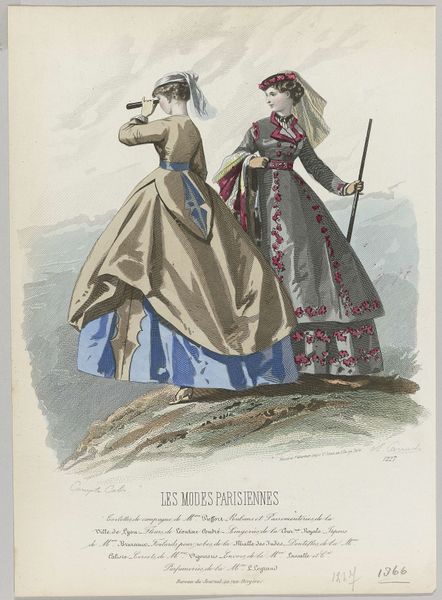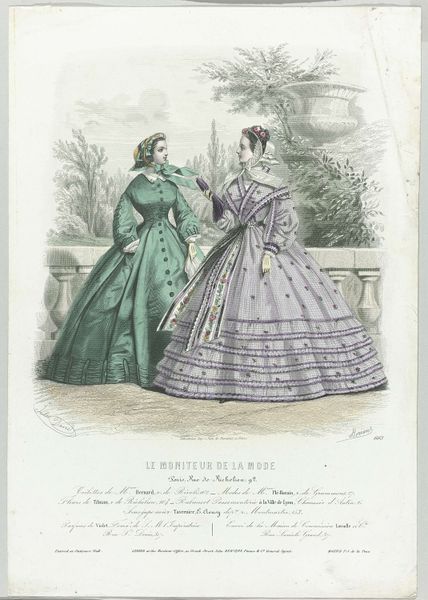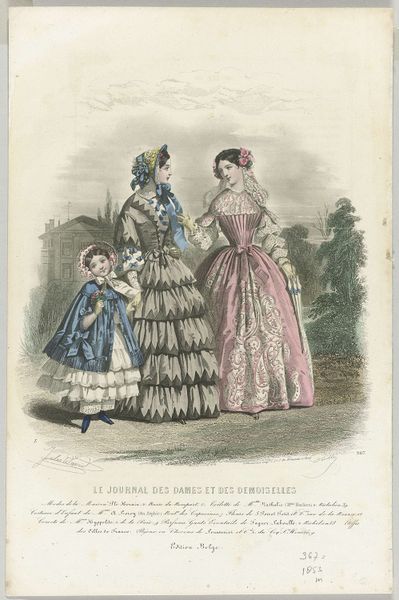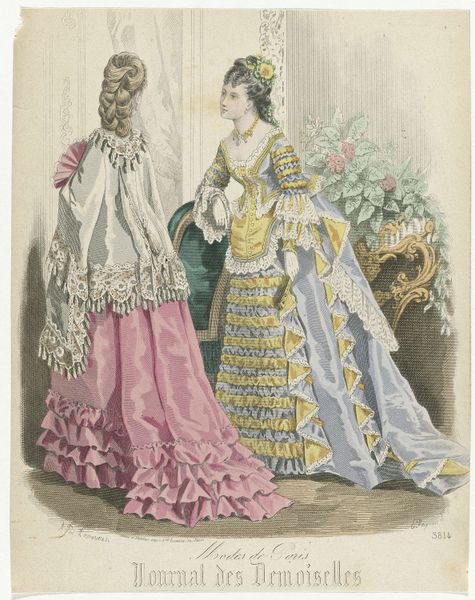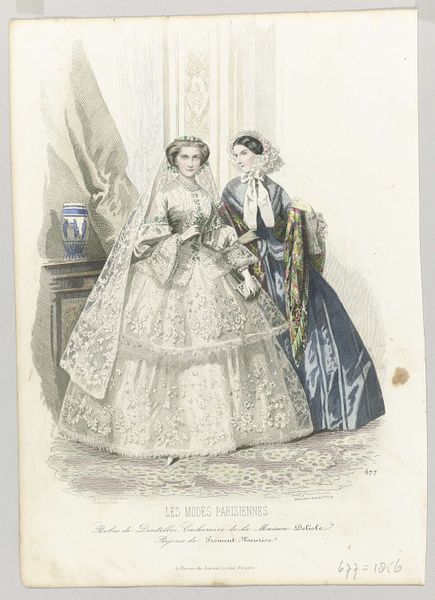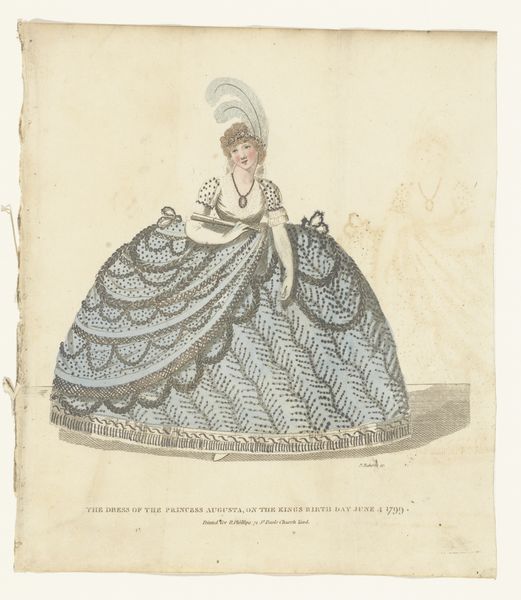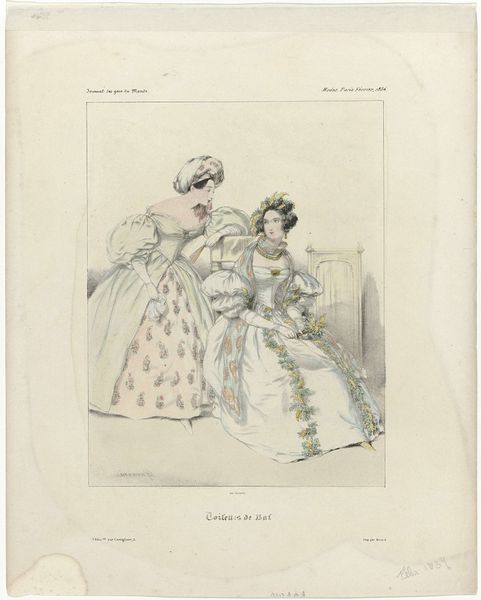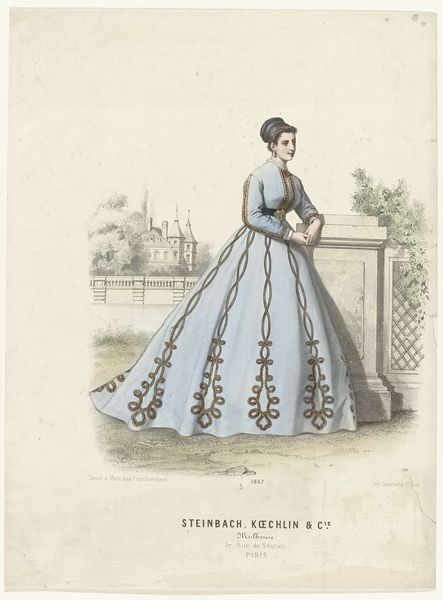
Dimensions: height 265 mm, width 190 mm
Copyright: Rijks Museum: Open Domain
Editor: Here we have Laurent François Guerdet’s "An Explosion of Fashion Magazines," created in 1858. It's a mixed-media work, predominantly watercolor, depicting two women’s fashion ensembles. It strikes me as incredibly detailed and ornate; you can really see the extravagance of mid-19th century fashion. What do you see in this piece, from your perspective? Curator: I see a carefully constructed snapshot of bourgeois identity in mid-19th century Paris. These aren't simply fashion plates; they're encoded with socio-economic information. The magazines themselves, acting almost as framing devices, were powerful tools for disseminating and dictating taste, reflecting and reinforcing the era’s social hierarchies. Who had access to these magazines and therefore, this level of 'fashion consciousness'? Editor: So, it's not just about the clothes, but about who gets to participate in this world of fashion. Does the piece also say something about the role of women? Curator: Absolutely. Consider the positioning and poses. One woman is presented fully, almost staged, while the other is partially obscured. What could that suggest about the performance of femininity and the expected level of public display? Editor: It’s like the woman on the left is 'performing' fashion for us, while the one on the right is almost a prop. The attention to detail highlights the commercial and social value placed on appearance. Curator: Precisely. And think about the caption—it cites specific establishments, directly linking the image to a network of businesses that profited from upholding those ideals. It becomes a commentary on consumerism and the fashion industry’s burgeoning influence. Editor: This has made me think so much more deeply about the image, its context, and how fashion is intertwined with commerce and society. Curator: Indeed. By understanding the historical forces at play, we can start to unpack what this seemingly simple fashion plate is truly communicating.
Comments
rijksmuseum about 2 years ago
⋮
Starting from the 1850s, fashion magazines became more affordable and acquired a wider readership. The invention of the sewing machine around 1850 made it easier for people to make their own clothes. Ready-made garments were now also on offer, with fashion plates providing vendor addresses, such as the Maison Gagelin in Paris.
Join the conversation
Join millions of artists and users on Artera today and experience the ultimate creative platform.


